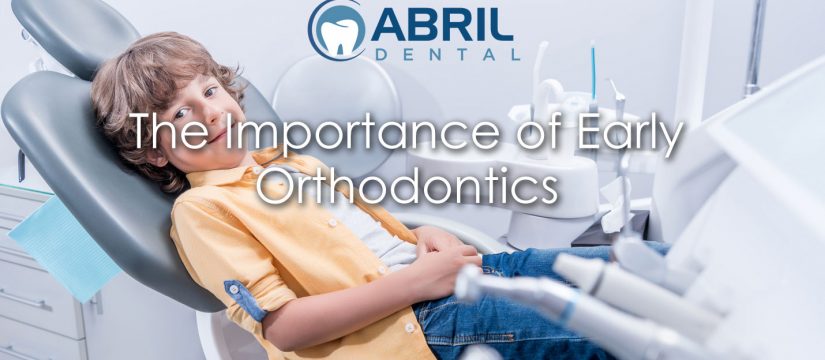
The Importance of Early Orthodontics
Take a look at images from the 50’s and 60’s and you’ll notice that many smiles are framed with heavy metal braces. If you compare that to high school kids today, it’s a sight that is less commonly seen. What has changed? Nowadays, there are many affordable ways to fix your smile. Children today tend to get braces at an earlier age, sometimes as young as age 7.
The American Association of Orthodontics (AAO) recommends that children should undergo orthodontic screening at the age of 7 because permanent teeth generally come out by this age–sometimes by age 6. Dentists say that this is when orthodontic problems become apparent so if they are addressed immediately, dental issues can be fixed early on.
According to Dr. Cangialosi, this is the best time for kids to be evaluated because their bones are still growing. This allows dentists to determine what type of orthodontic treatment is necessary and when it could be best done – now or in the future. Check out these tips on how to ease your child’s dental anxiety.
Cool Braces Are Available
Children and teenagers love cool stuff, especially on things they wear. Braces are not an exception to that. Fortunately, brightly colored elastics are available with braces. They are actually tiny rubber bands that hold wires to orthodontic brackets. Children can choose what colors to use so that it matches their preferences.
It Takes Time to Get Used to Braces
Even though braces today are more comfortable and are becoming less visible than they used to be, it still takes time to get used to them. Food can still get caught in the wires, and brushing and flossing teeth can be a struggle as well. The teeth can be a little sore during their adjustment period. When experiencing pain, the patient may take pain relievers such as ibuprofen or aspirin.
Interceptive Orthodontics
Orthodontics treatment for kids is called interceptive orthodontics and it may begin as early as 6 or 7 years old, when the teeth and jaw are still growing and developing. This makes dental problems easier to address.
It’s possible to help the teeth erupt into better positions before the permanent teeth fully develop, and it’s common for the dental arch to appear too small to fit all of the teeth, resulting in crowding of the teeth. Before, the only solution for crowding was to remove a few permanent teeth in order to make space, and then place fixed braces to align the teeth properly.
Today, interventions at early stages are beneficial because we can take advantage of the fact that the child’s jaw is still growing. Devices called palatal expanders widen a child’s upper dental arch, allowing for more space without removing teeth. Moreover, functional appliances may fix dental issues or improve children’s teeth.
It is important to realize that children may still require braces after interceptive orthodontics, since early treatments do not fix 100% of orthodontic issues. But they do help in most cases, and they allow for a more successful orthodontic treatment later on.
